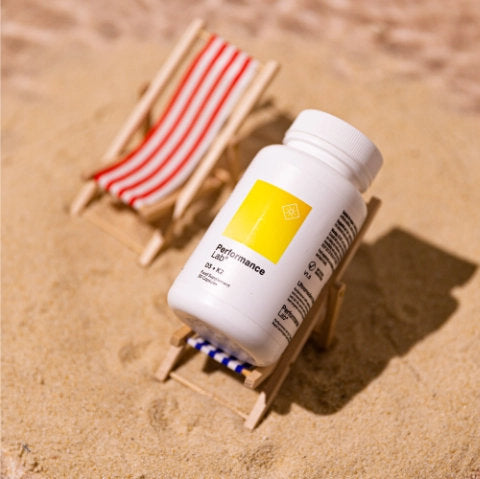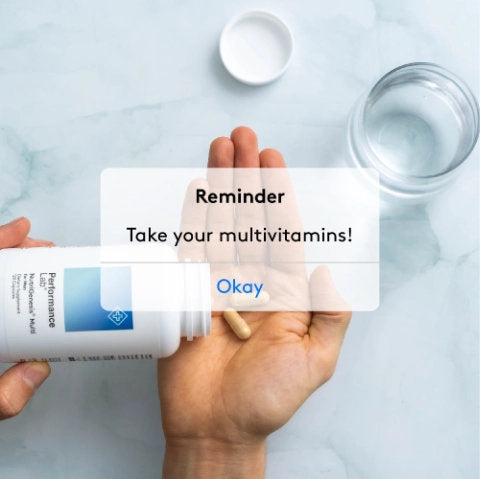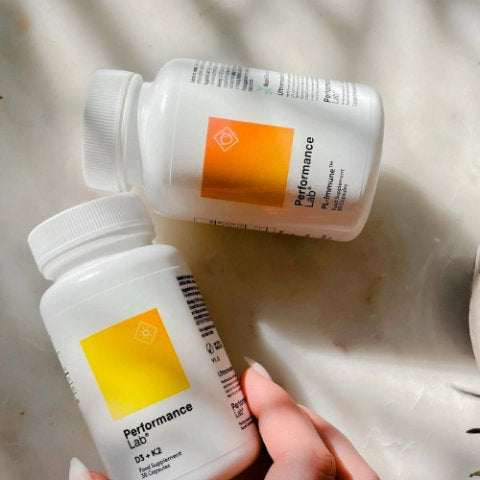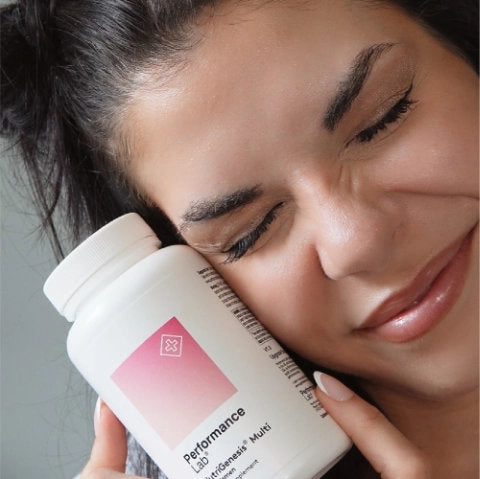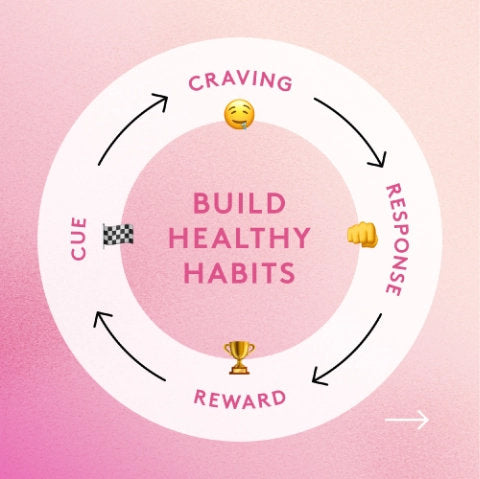Of the four fat-soluble vitamins, vitamin A doesn’t get a lot of attention. Despite being first in the alphabet, a lot of times people forget about just how important it is and pass it up in favor of its more well-known cousins, vitamin C or D.
But along with its fat-soluble friends, vitamin A is required for several physiological processes, especially when it comes to vision.
Vitamin A is a nutrient found in both plant and animal foods, and while a deficiency isn’t the most common compared to some other nutrients, it does happen.
If you’re not sure what to look for with vitamin A, we’re breaking it all down for you. We’re covering what vitamin A is and its role in the body, the top signs that you may have a vitamin A deficiency, and how you can maintain sufficient levels.
What is Vitamin A, and Why Do We Need It?
Along with vitamins D, E, and K, vitamin A is not a single nutrient, but rather a group of fat-soluble compounds, including retinol, retinal, and retinyl esters 1. Like many other nutrients, it cannot be synthesized by the body and therefore must be obtained through diet. It comes in two main forms:
- Preformed vitamin A
- Provitamin A
Vitamin A is one of the most multifunctional vitamins in the human body and is involved in several physiological processes from pre-birth to adulthood. However, many of these critical functions are not carried out by retinol itself, but rather its active metabolites. These functions include: 1:
- Epithelial integrity and function (skin, lining of the respiratory tract, gut, bladder, inner ear, eyes)
- Regeneration of skin cells
- Mucous production
- Barrier function against infection
- Healthy immune function
- Growth and development
- Reproduction
Because of its major supporting role in maintaining health and well-being, vitamin A deficiency is now referred to as vitamin A deficiency disorder.
What Happens With A Vitamin A Deficiency?
Like a deficiency in any other nutrients, vitamin A deficiency has a major effect on several processes in the body. However, one of the main consequences of a deficiency is an increased risk of severe infection.
Because illness and infection increase the body's demand for vitamin A, stores can rapidly become depleted, which can exacerbate an existing deficiency 1. As such, it can become a vicious cycle of deficiency and infection.
Vitamin A deficiency is more of a concern in developing countries due to malnutrition, and although it remains relatively uncommon in developed nations, it does occur in people with liver disease, severe malabsorption, or those who have had small bowel surgery 2.
7 Signs You May Have Vitamin A Deficiency
Dry skin
While dry skin may be a sign that you’re not getting enough fatty acids in your diet, it can also mean that you’re low on vitamin A. It’s essential for the production and repair of skin cells, along with curbing inflammation that can arise with certain skin issues like eczema 3.
If you’ve never had eczema before, it’s a skin condition that causes dry, flaky, itchy, and inflamed skin, and can develop just about anywhere on the body. And studies show that vitamin A can be an effective treatment for dermatitis 4, 5.
A 12-week study of 348 people with hand dermatitis looked at the effects of vitamin A supplementation as a treatment for the skin condition. They found that 10–40 mg of alitretinoin (retinoic acid) daily for 12 weeks resulted in up to a 53% reduction in symptoms 4.
Dry eyes
Eye and vision problems have some of the most well-known links to vitamin A, and while night vision problems are generally the tell-tale sign of vitamin A deficiency, dry eyes are also another common symptom. And by dry eyes, we mean the inability to produce tears.Tear film stability is essential for maintaining the health of the eyes and keeping them moist to prevent dryness. And while dry eye is a complex disease with several causes, vitamin A is important for the ocular tear film, along with the integrity of the ocular surface 6.
One study looked at 30 male patients with dry eyes supplementing 1500mg oral vitamin A for 3 consecutive days. Researchers found that vitamin A not only ameliorated the symptoms of dry eye but also enhanced the smoothness and stability of the ocular tear film while increasing tear production.
Related Post: Vitamin C and Dry Eyes
Poor night vision
The ability of the retina to adjust and adapt to dim lighting conditions depends on adequate levels of vitamin A.
This is because 11-cis retinal is an integral part of the compound rhodopsin, which is found in high concentrations in the rods of the retina. Without sufficient levels of vitamin A in the retina, the function of the rods in dim light situations becomes compromised, which causes abnormal dark adaptation (i.e. night blindness) 7.
Keep in mind that while night blindness is reversible and appears secondary to a vitamin A deficiency, it serves as a reminder of the importance of consuming adequate vitamin A 2.
Additionally, opting for supplements that support ocular health like Performance Lab Vision can be a great avenue in addition to a diet rich in vitamin A.

PL-Vision combines ultramodern eye supplements that promote eye health and vision performance for everybody – enhancing focus speed, motion detection, night vision, and more.
With FloraGLO® lutein and zeaxanthin plus purified extracts of bilberry, blackcurrant, and saffron, Vision uniquely supports both dynamic eyesight and long-range eye health.
Infertility
Fertility issues run rampant in many parts of the world. Vitamin A is required for healthy fertility in both men and women, along with the proper growth and development of the fetus.
Studies show that adequate levels of vitamin A are essential for normal female reproductive function and many embryonic events throughout pregnancy. Vitamin A deficiency can disrupt reproduction or cause abnormal fetal development, along with an increased risk of miscarriage 8, 9.
But that’s not it. Male reproduction is also affected by vitamin A deficiency, as it’s required for normal production of testosterone, along with spermatogenesis 10.
Frequent respiratory infections
While a weakened immune system can be attributed to any number of factors—poor sleep, unhealthy diet, lack of exercise, excessive stress, etc.—more frequent colds could indicate that you’re running low on vitamin A.
While studies have shown positive results with vitamin A supplementation for treating chest and throat infections, evidence is still largely mixed.
However, because vitamin A is involved in the proliferation and maintenance of epithelial cells, including those lining the respiratory tract, a deficiency can disrupt normal lung physiology and predisposes people to tissue dysfunction and respiratory diseases 11.
Studies suggest that individuals with reduced plasma vitamin A levels are at a greater risk of repeated respiratory infections, which constitutes one of the main health problems in developing countries.
Delayed wound healing
Struggling with injuries that just don’t want to heal? It could be a sign that you’re low in vitamin A. That’s because vitamin A plays an important role in the production of collagen, the most abundant protein in the human body that makes up all connective tissues—skin, hair, bones, tendons, ligaments, cartilage, and even blood vessels.
A rodent study published in the Archives of Surgery looked at the effects of retinoid supplementation on wound healing and found that retinoids can counteract the effects of steroids to promote improved wound healing by increasing growth factors and collagen deposition 12.
Research in humans shows similar results with topical vitamin A supplementation, resulting in a 50% reduction in the size of wounds in elderly men with photodamaged skin compared to those who didn’t use the vitamin A cream 13.
Acne and skin issues
While inflammation may not be the first thing that comes to mind with acne, it does have an underlying inflammatory component where vitamin A may be beneficial.
Due to its effects on reducing inflammation and supporting skin cell growth and maintenance, vitamin A could help prevent or treat acne. Several studies have linked low levels of vitamin A with an increasing prevalence of blemishes 14, 15.
However, research shows that both topical and oral treatment with vitamin A can reduce the number of acne lesions by up to 50% 16.
How To Get Enough Vitamin A
Load up on fruits and vegetables
Colorful fruits and vegetables are some of the richest sources of vitamin A for people following a plant-based diet.
However, keep in mind that plant-based foods are generally high in carotenoids (provitamin A), which can be converted to preformed vitamin A, but may not be as efficient as consuming preformed vitamin A right off the bat. Some of the best sources include:
- Dark leafy greens
- Mangos
- Papaya
- Squashes
- Pumpkin
- Carrots
- Sweet potatoes
- Maize
Eat your animal sources
For those who choose to consume animal products, they’re a great source of highly bioavailable vitamin A in the form of retinal. While animal muscle meats aren’t a great source of vitamin A, there are several other options:
- Liver, including fish liver
- Egg yolks
- Dairy (milk, cheese, butter)
- Fish and seafood
Don’t be afraid of fats
Certain fats are also a great source of vitamin A, specifically red palm oil and biruti palm oil. However, if these fats are boiled to remove the color, vitamin A levels drastically decline, so always opt for the most natural, unprocessed form.
Supplement wisely
In cases where maybe insufficient amounts of vitamin A are coming in through diet, supplementation is a great alternative to ensure you’re meeting your requirements.
Performance Lab NutriGenesis Multi contains ultramodern multivitamin supplements, providing 100% of the RDI in 17+ essential vitamins and minerals, all bioengineered with cofactors to enhance absorption and utilization.
Final Thoughts
Vitamin A doesn’t often get a lot of attention in the supplement world, but it should. Most people will get adequate intake through diet, but for those who follow special diets where vitamin A-rich foods are restricted, deficiency symptoms can start to develop.
Use this article as a guideline to determine if your vitamin A levels are up to par or if you need a little assistance to get them back up!
References
- C Gilbert. What is vitamin A and why do we need it?. Community Eye Health. 2013;26(84):65.
- LJ Clifford, AMJ Turnbull, AM Denning. Reversible night blindness – A reminder of the increasing importance of vitamin A deficiency in the developed world [Ceguera nocturna reversible – recordatorio de la importancia creciente de la deficiencia de vitamina A en el mundo desarrollado]. J Optom. 2013;6(3):173-174.
- M Schindler, G Drozdenko, AA Kühl, M Worm. Immunomodulation in patients with chronic hand eczema treated with oral alitretinoin. Int Arch Allergy Immunol. 2014;165(1):18-26.
- T Ruzicka, FG Larsen, D Galewicz, et al. Oral alitretinoin (9-cis-retinoic acid) therapy for chronic hand dermatitis in patients refractory to standard therapy: results of a randomized, double-blind, placebo-controlled, multicenter trial. Arch Dermatol. 2004;140(12):1453-1459.
- SY Oh, J Chung, MK Kim, SO Kwon, BH Cho. Antioxidant nutrient intakes and corresponding biomarkers associated with the risk of atopic dermatitis in young children. Eur J Clin Nutr. 2010;64(3):245-252.
- SA Alanazi, GA El-Hiti, AA Al-Baloud, et al. Effects of short-term oral vitamin A supplementation on the ocular tear film in patients with dry eye. Clin Ophthalmol. 2019;13:599-604.
- Institute of Medicine (US) Panel on Micronutrients. Dietary Reference Intakes for Vitamin A, Vitamin K, Arsenic, Boron, Chromium, Copper, Iodine, Iron, Manganese, Molybdenum, Nickel, Silicon, Vanadium, and Zinc. Washington (DC): National Academies Press (US); 2001. 4, Vitamin A. Available from: https://www.ncbi.nlm.nih.gov/books/NBK222318/
- T Kalampokas, A Shetty, A Maheswari. Vitamin A Deficiency and Female Fertility Problems: A Case Report and Mini Review of the Literature. J Women’s Health Care. 2014; 3(6).
- M Simşek, M Naziroğlu, H Simşek, M Cay, M Aksakal, S Kumru. Blood plasma levels of lipoperoxides, glutathione peroxidase, beta carotene, vitamin A and E in women with habitual abortion. Cell Biochem Funct. 1998;16(4):227-231.
- CA Hogarth, MD Griswold. The key role of vitamin A in spermatogenesis. J Clin Invest. 2010;120(4):956-962.
- J Timoneda, L Rodríguez-Fernández, R Zaragozá, et al. Vitamin A Deficiency and the Lung. Nutrients. 2018;10(9):1132.
- C Wicke, B Halliday, D Allen, et al. Effects of steroids and retinoids on wound healing. Arch Surg. 2000;135(11):1265-1270.
- C Popp, AM Kligman, TJ Stoudemayer. Pretreatment of photoaged forearm skin with topical tretinoin accelerates healing of full-thickness wounds. Br J Dermatol. 1995;132(1):46-53.
- Z El-Akawi, N Abdel-Latif, K Abdul-Razzak. Does the plasma level of vitamins A and E affect acne condition?. Clin Exp Dermatol. 2006;31(3):430-434.
- P Ozuguz, S Dogruk Kacar, O Ekiz, Z Takci, I Balta, G Kalkan. Evaluation of serum vitamins A and E and zinc levels according to the severity of acne vulgaris. Cutan Ocul Toxicol. 2014;33(2):99-102.
- S Veraldi, M Barbareschi, E Guanziroli, et al. Treatment of mild to moderate acne with a fixed combination of hydroxypinacolone retinoate, retinol glycospheres and papain glycospheres. G Ital Dermatol Venereol. 2015;150(2):143-147.

